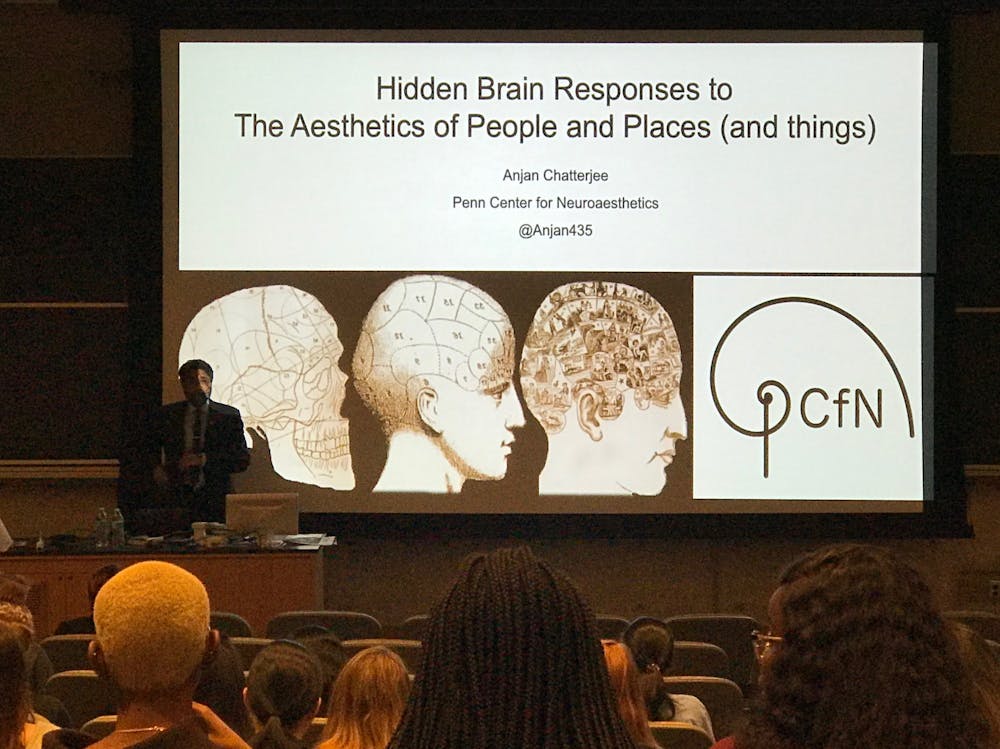The Hopkins Undergraduate Society for Neuroscience (Nu Rho Psi), the Neuroscience Department and the Hopkins Office for Undergraduate Research (HOUR) hosted the Undergraduate Research Symposium (URS) on Tuesday. The Symposium aims to provide students with internal opportunities to present the research they have been conducting. The symposium provides undergraduate students with the opportunity to submit an abstract and present their research. The presentations are typically eight to 10 minutes long, followed by a couple of minutes of questions from the audience.
All students participating in research and independent projects across the university are welcome to participate in URS. However, there tends to be a large percentage of presentations of Neuroscience and Behavioral Biology research since students within these departments can, in addition to practicing their public speaking skills, fulfill one of their major’s requirements to earn honors by presenting at the symposium.
The goal of this year’s URS was to demonstrate the innovation that comes from collaboration between diverse disciplines and to encourage dialogue between students from different fields. Student presentations ran from 4 p.m. to 8 p.m., and were followed by a keynote presentation by Dr. Anjan Chatterjee, a professor of Neurology at the University of Pennsylvania and the director of the Penn Center of Neuroaesthetics.
The symposium featured 58 student presenters scattered across five presentation rooms. Their research ranged from understanding the energy cost of walking after a stroke by simulating gait deficits in healthy adults, to developing a Sarm1 (a gene involved in innate immunity) knockout in the Neuro-2a cell line.
Student presenters submitted an abstract in collaboration with their research mentors prior to the event.
At the event, they presented a summary of their work and answered questions from the audience to help them better understand their project.
This allows presenters to translate their actions at their laboratory into words that their peers may understand, gain confidence in presenting in front of others and understand the questions that individuals not involved in the project may have regarding the methods used or the results obtained during the process.
In addition, these presentations allow students in the audience to learn about the variety of research being conducted by their peers at Hopkins and what is expected when preparing a presentation.
At the end of the night, Chatterjee gave a presentation entitled “The Hidden Brain Responses to the Aesthetics of People and Places.” His research interests include neuroaesthetics, spatial cognition and language as well as neuroethics.
His presentation addressed the basic concepts of neuroaesthetics, which is a new field tasked with uncovering the biological bases of human aesthetic experience.
Chatterjee revealed that the human brain responds automatically to the aesthetics of faces and scenes around us.
Such automatic responses have led to study results in which people deem a stranger with facial malformations as less trustworthy than the same stranger with the facial malformations removed.
Chatterjee explained the significance of areas of the brain associated with empathy having decreased activity when presented with images of people with facial anomalies.
“This may be a biological marker of something akin to dehumanization, that when you look at some category of people, in this case individuals with facial anomalies, you inhibit yourself from being empathetic to them,” he said.
Chatterjee also presented results which indicated that individuals with Parkinson’s Disease are able to perceive motion in artwork to a lesser degree than healthy controls.
“We looked at a whole series of paintings and we had Parkinson’s patients and healthy controls rate them on a bunch of different dimensions,” he said.
“You can see that people with Parkinson’s have a more constricted sense of movement compared to elderly controls. If you ask the question, not about movement, but about complexity, you see people with Parkinson’s respond in about the same way as elderly controls.”
Chatterjee emphasized that the impairments seen in aesthetic experience are only found in one aspect of the experience.
“This is telling us it is not the case that people with Parkinson’s don’t have aesthetic experiences. It suggests if you have an impaired motor system, then it does impair your aesthetic experience on that one parameter,” he said.
Beyond allowing students to present their research, this year’s URS provided the opportunity for students to learn about current projects in various departments across Hopkins as well as an introduction to a growing field within neuroscience.
Their two main events during the academic year are the Undergraduate Research Symposium, which features oral presentations by students and a keynote address, as well as DREAMS, which features student presentations through posters, demonstrations, films and performances.





